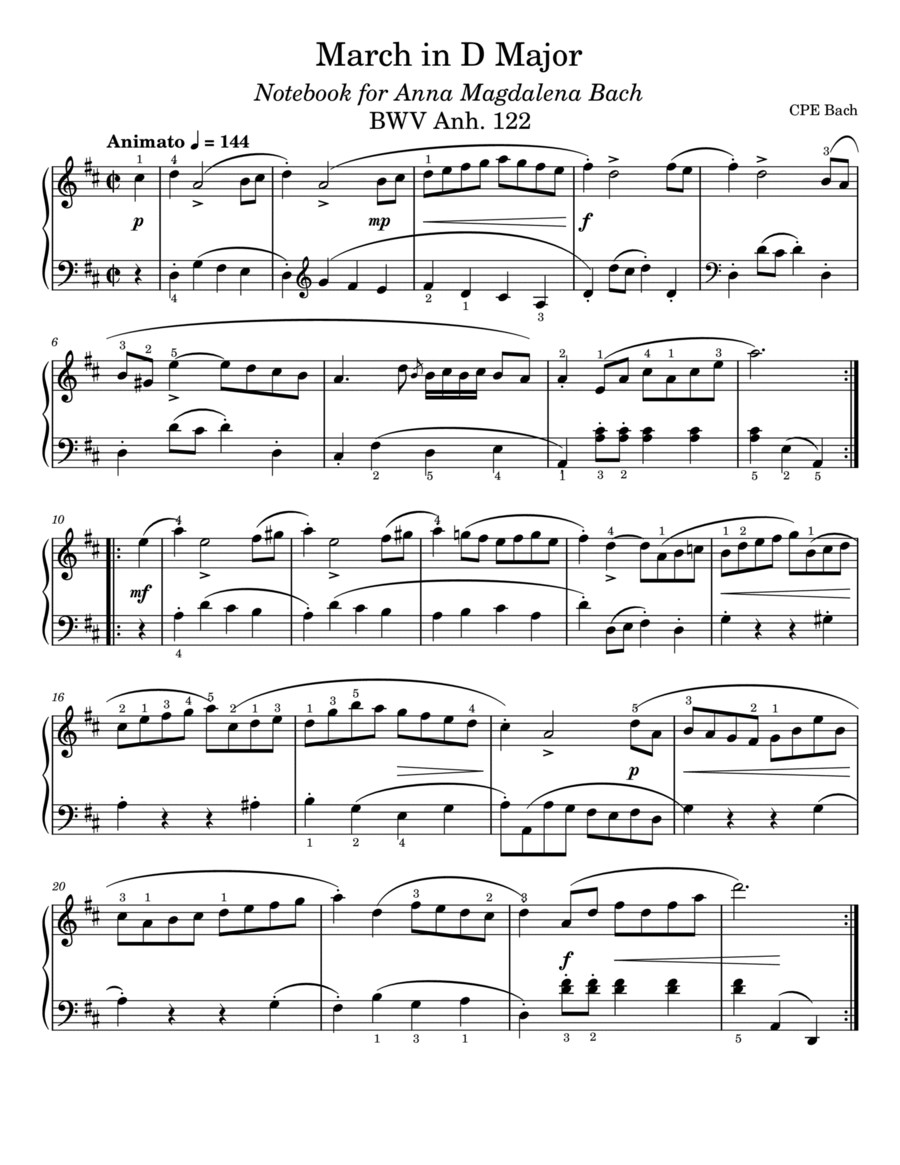Piano Solo - Level 2 - Digital Download SKU: A0.1368455 By Jose Valladares. By Johann Sebastian Bach. Arranged by Jose Valladares. Baroque. Score. 1 pages. Circlesquare Music #952801. Published by Circlesquare Music (A0.1368455). The March in D Major, BWV Anh. 122 is attributed to Johann Sebastian Bach, one of the most influential composers of the Baroque era. However, it's important to note that BWV Anh. 122 is part of the Anhang (Anh.), a section of the Bach-Werke-Verzeichnis (Bach Works Catalogue) that includes works of dubious authenticity or those once attributed to Bach but later found to be composed by other composers. In the case of BWV Anh. 122, it's generally believed that the piece was not composed by J.S. Bach himself but rather by one of his contemporaries or successors.Despite the uncertainty regarding its true composer, the March in D Major, BWV Anh. 122 is a delightful and spirited composition that exhibits the stylistic characteristics of the Baroque period. Here are some key aspects of the piece:Baroque Style: The piece reflects the Baroque style, known for its emphasis on contrast, movement, and clear, structured forms. The march is typically characterized by a steady, processional rhythm, and BWV Anh. 122 exemplifies this with its clear, marching tempo.D Major Key: Being in D Major, the piece likely has a bright and jubilant character. D Major is often associated with grandeur and triumph, making it a popular choice for celebratory and ceremonial music during the Baroque period.Keyboard Composition: Like many of Bach's (or his contemporaries') compositions, this march is likely composed for the keyboard, which during Bach's time would have included instruments like the harpsichord or the clavichord. It might also be adaptable for performance on the modern piano.Structure and Texture: The piece probably features a contrapuntal texture, a hallmark of Baroque music, where two or more melodic lines are woven together harmoniously. The structure of the march is likely to be straightforward and symmetrical, reflecting the order and balance prized in the Baroque era.Pedagogical Use: Pieces like the March in D Major, BWV Anh. 122 are often used for educational purposes, helping students develop a sense of rhythm, form, and Baroque style. They are suitable for intermediate-level students who are exploring the stylistic features of Baroque keyboard music.
